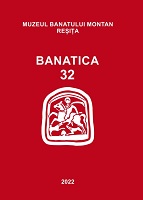CAMPANIILE DALMATE ŞI ITALIENE ALE NOBILILOR DE RECAŞ: IMPLICAŢIILE UNUI DOCUMENT REGAL DIN AUGUST 1359
THE DALMATIAN AND ITALIAN CAMPAIGNS OF THE NOBLEMEN OF RECAS: THE IMPLICATIONS OF A ROYAL CHARTER FROM AUGUST 1359
Author(s): Alexandru SimonSubject(s): Local History / Microhistory, Political history, 13th to 14th Centuries
Published by: Editura Mega Print SRL
Keywords: King Louis I of Anjou; Alexandru Basarab of Wallachia; Recaş; Zadar; exiles;
Summary/Abstract: On August 29, 1359, King Louis I of Anjou granted the Recaş estate (in the present-day Romanian Banat) to the sons of Ladislas, the son of Zarna, Olachorum nostrorum fidelium. The king of Hungary had taken that estate from Nicholas, Philip and John (likewise Wallachians) who had been unfaithful to both Louis I and to his father, Charles-Robert. The sons of Ladislas in return had sided with Angevine monarch when the lord of these sons of Ladislas, Alexander Basarab, voivode of Wallachia, had refused to acknowledge King Louis as his natural suzerain. For this, the sons of Ladislas had lost their lands and fortunes and had to take refuge in the Hungarian kingdom. Still, they went on and distinguished them in King Louis’ service, specialiter ante Jadram et in partibus Treuisianis. The charter bore the royal double seal and was confirmed by the main secular and ecclesiastical authorities of the Angevine realm, including the bishops of Zadar, Nicholas de Matafaris, and Split, Ugolin de Malabranca. Louis I certainly cared much about these Wallachians, especially about one of Ladislas’ sons, Karapeh a future familiar of the royal court., and valued their loyalty, proven especially – according to the same king – in front of Zadar. As indicated also by the less than triumphant words of the son of Charles-Robert, these Adriatic deeds were accomplished in the summer of 1346, during King Louis’ failed attempt to relieve the city of Zadar besieged by the Venetian forces. It was against the soldiers of the same Republic of Saint Mark that the Wallachiane exiles distinguished themselves while fighting in the neighbourhood of Treviso in mid–1357. Conspicuously enough since the 1830s, as well as well into the 1970s, both Hungarian and Romanian historians and editors have avoided a proper reading of the et in partibus Treuisianis wording in the royal charter from 1359. Treuisianis was either “transliterated” Transmarinis or the passage was omitted from the editions and labelled “lacuna in the original charter”. The Hungarian part was seemingly afraid that the passage might read Trans(s)iluanis, meaning – erroneously? – that Louis I had to fight also the Wallachians for haloed Transylvania The Romanian part – “justifiably” – feared that the correct reading, Treuisianis, would lead to the collapse of the historiographical vulgate of the beginnings of Wallachia. That vulgate was founded on a strange graffito discovered in the Princely Saint Nicholas Church in Curtea de Argeş in 1920, a few months after the Peace of Trianon.
Journal: BANATICA
- Issue Year: 1/2022
- Issue No: 32
- Page Range: 11-21
- Page Count: 11
- Language: Romanian

